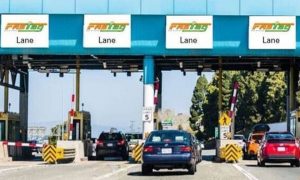Under SMART all these four stations-Virar and Thane in Maharashtra, along with Sabarmati and Surat in Gujarat – will be developed into vibrant activity hubs.
Read More:- No OTP from November 1? Jio, Airtel, Vodafone get deadline extension till….
New Delhi: Under the SMART (Station Area Development) plan, the Indian Railways has earmarked four of the twelve stations on India’s inaugural bullet train route between Mumbai and Ahmedabad for targeted development, according to The Indian Express report.
These stations – Virar and Thane in Maharashtra, along with Sabarmati and Surat in Gujarat – will be developed into vibrant activity hubs. This will enhance the connectivity and provide modern amenities for travelers and nearby communities.
Also Read:- Fixed Deposits With Special Rates: Lock In Your Money For Higher Returns
SMART Development:
- Under SMART all these four stations-Virar and Thane in Maharashtra, along with Sabarmati and Surat in Gujarat – will be developed into vibrant activity hubs.
- The connectivity will be enhanced after the development, and this will provide modern amenities to travelers and nearby communities.
- The SMART development prioritises enhanced accessibility and convenience, ensuring hassle-free travel for commuters.
- To foster economic growth around these stations, the project adopts Transit-Oriented Development (TOD) principles.
- With TOD, the areas surrounding each station will feature a diverse mix of land uses, including offices, hotels, educational institutions, and healthcare facilities, all within walking distance.
- The goal is to establish dynamic, self-sustaining urban ecosystems that stimulate local businesses, generate jobs, and bolster the regional economy.
Also Read– Six Major Financial Changes In November: LPG, Mutual Funds, Telecom Spam Blocking And More
Division of 800m area
The bullet train stations will be developed by the National High Speed Rail Corporation Limited (NHSRCL) and its immediate surroundings. The stations will have pickup and drop-off zones, parking facilities, passenger plazas, and connections to existing infrastructure.
According to the reports, within 10 years, these stations will become operational, under Area 2. The officials will focus on enhancing road connectivity and developing supporting infrastructure around the station.
Area 3: In the 10 to 20 years following the station’s launch, the state government, alongside urban development and city planning authorities, will spearhead development efforts throughout the surrounding area.





































